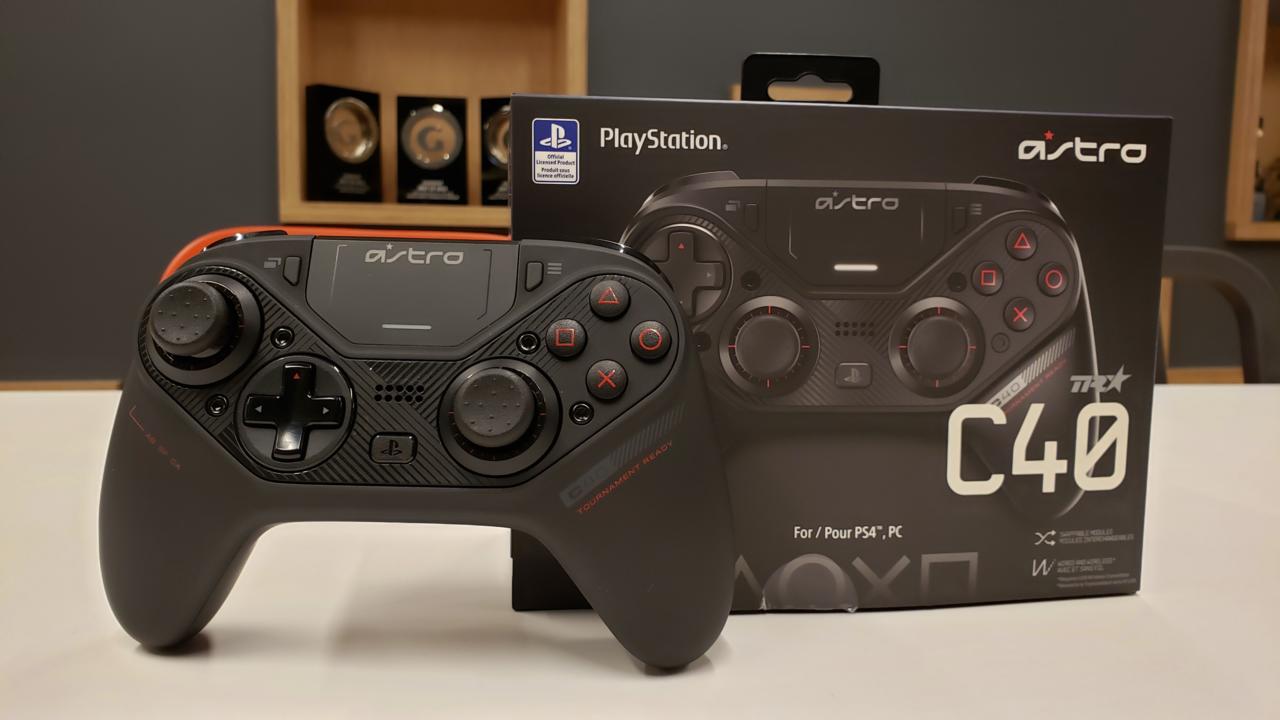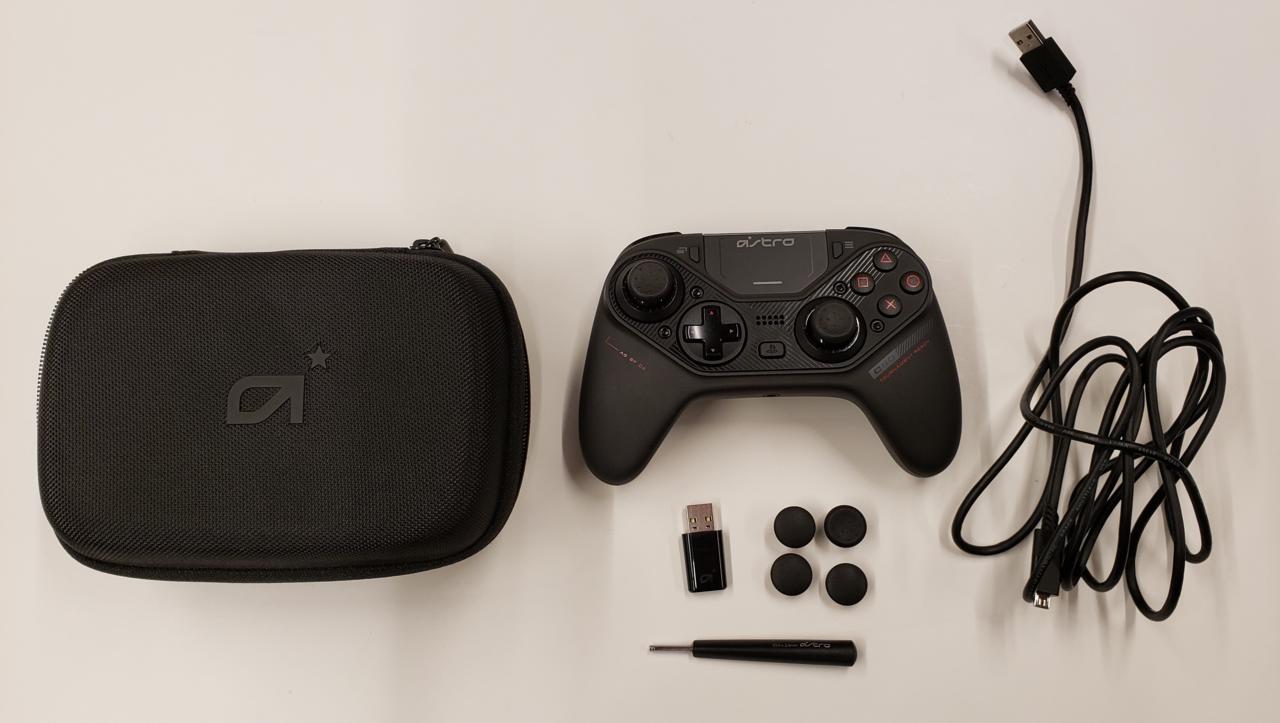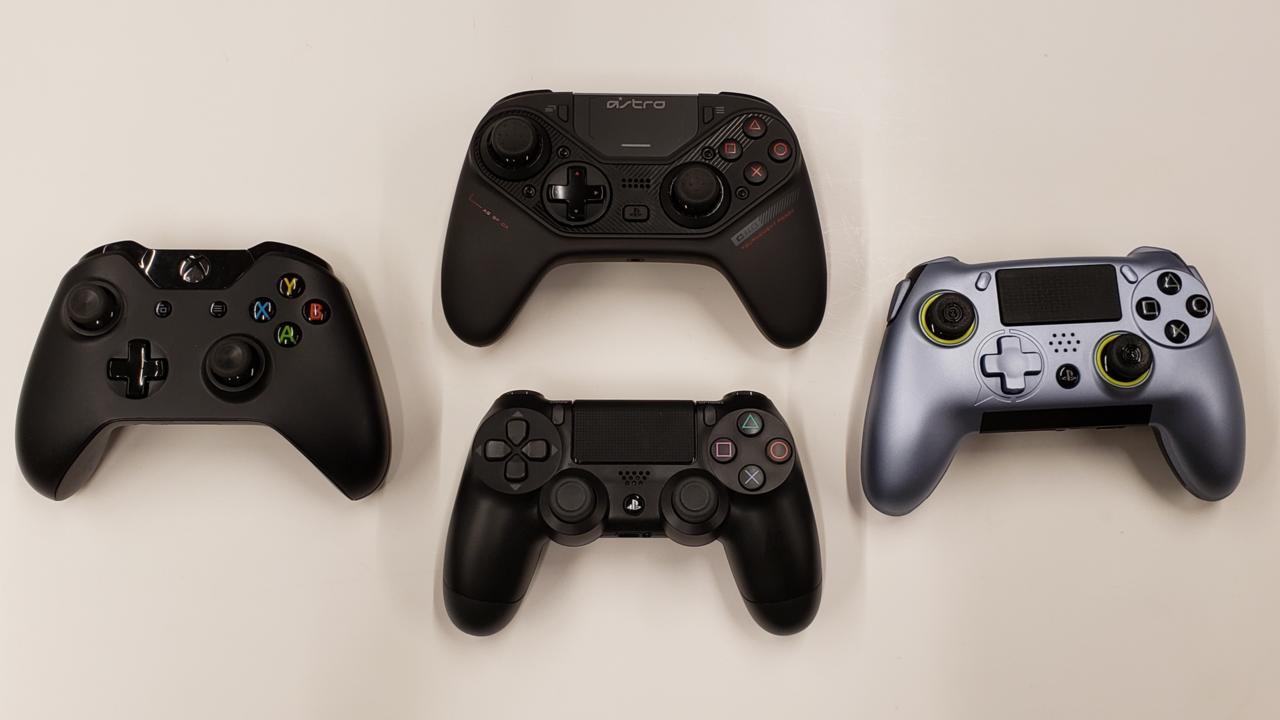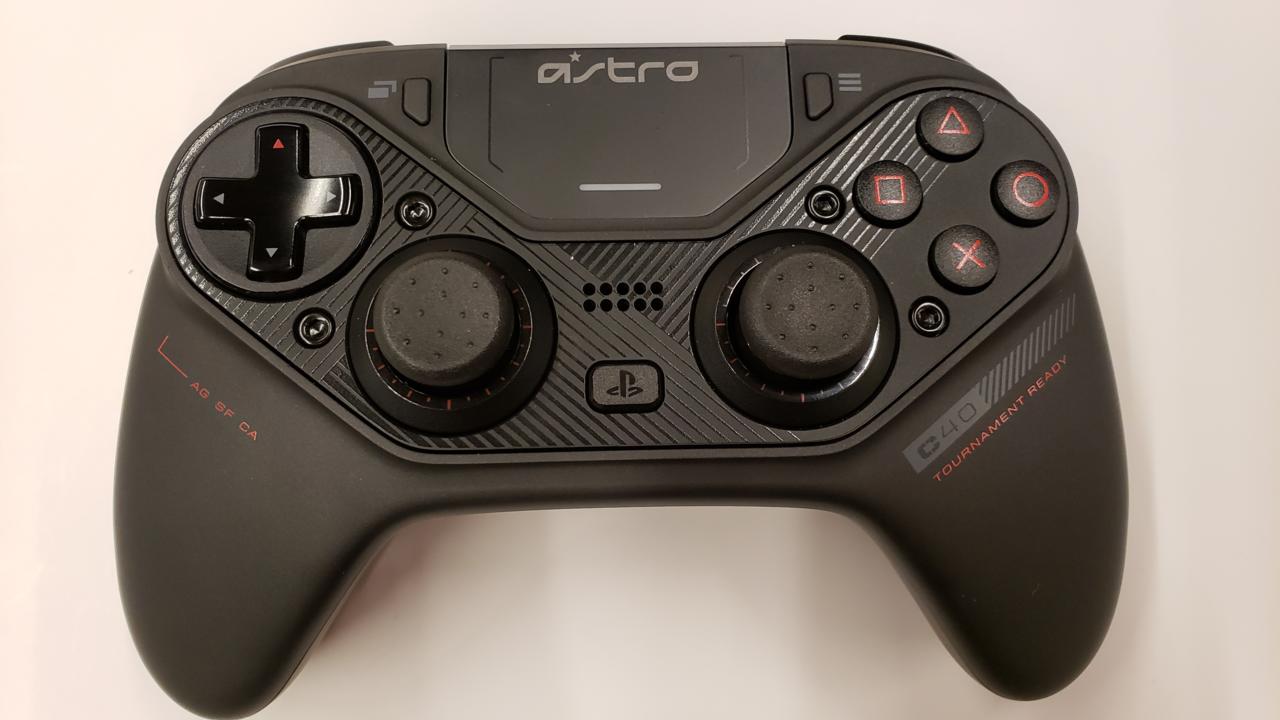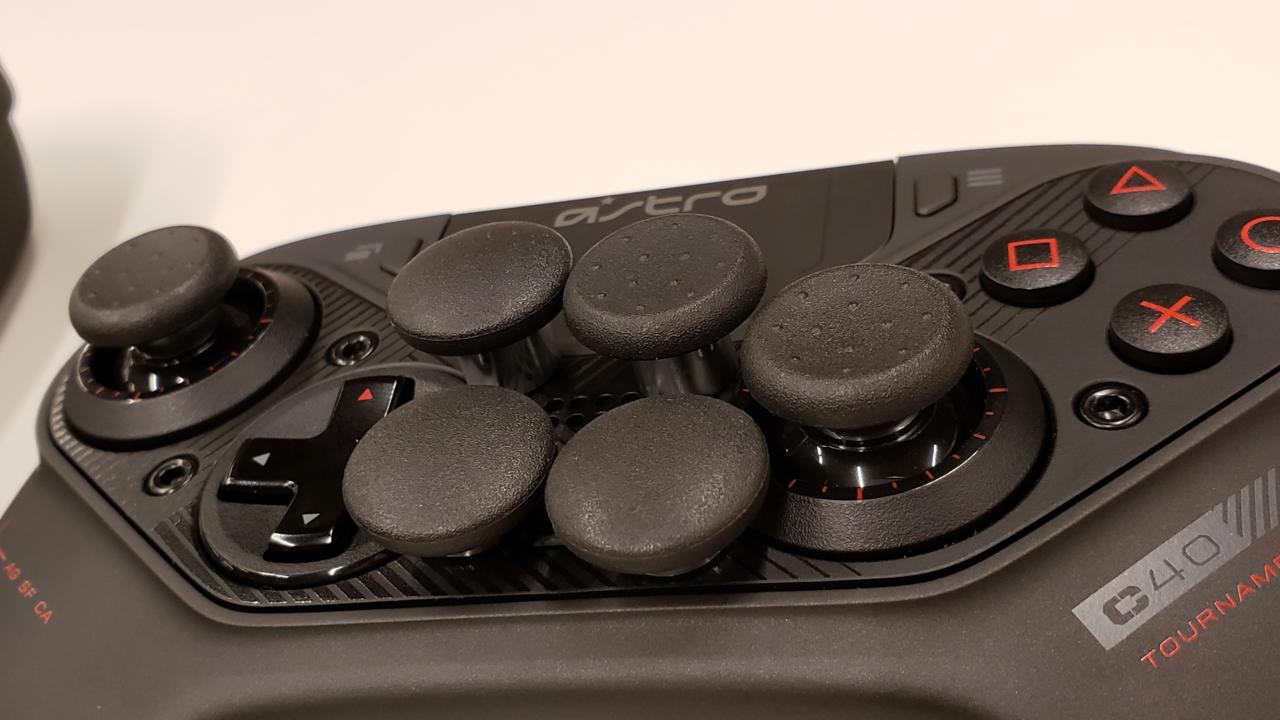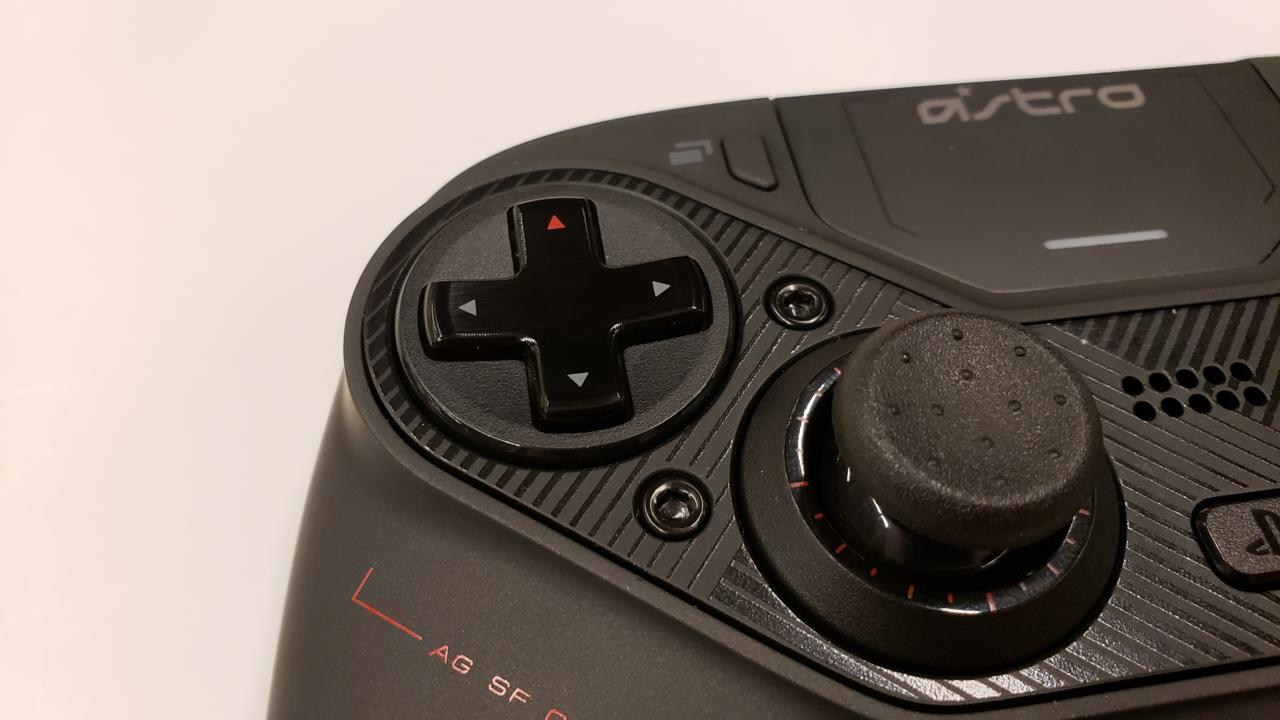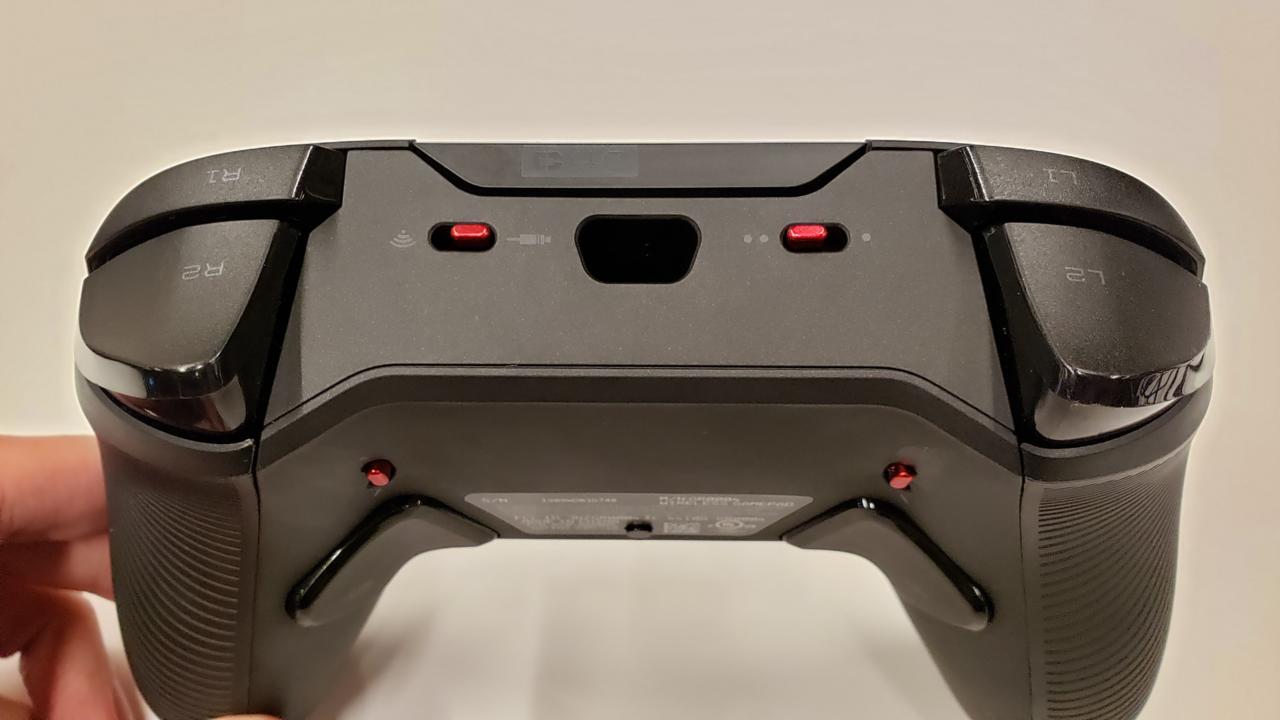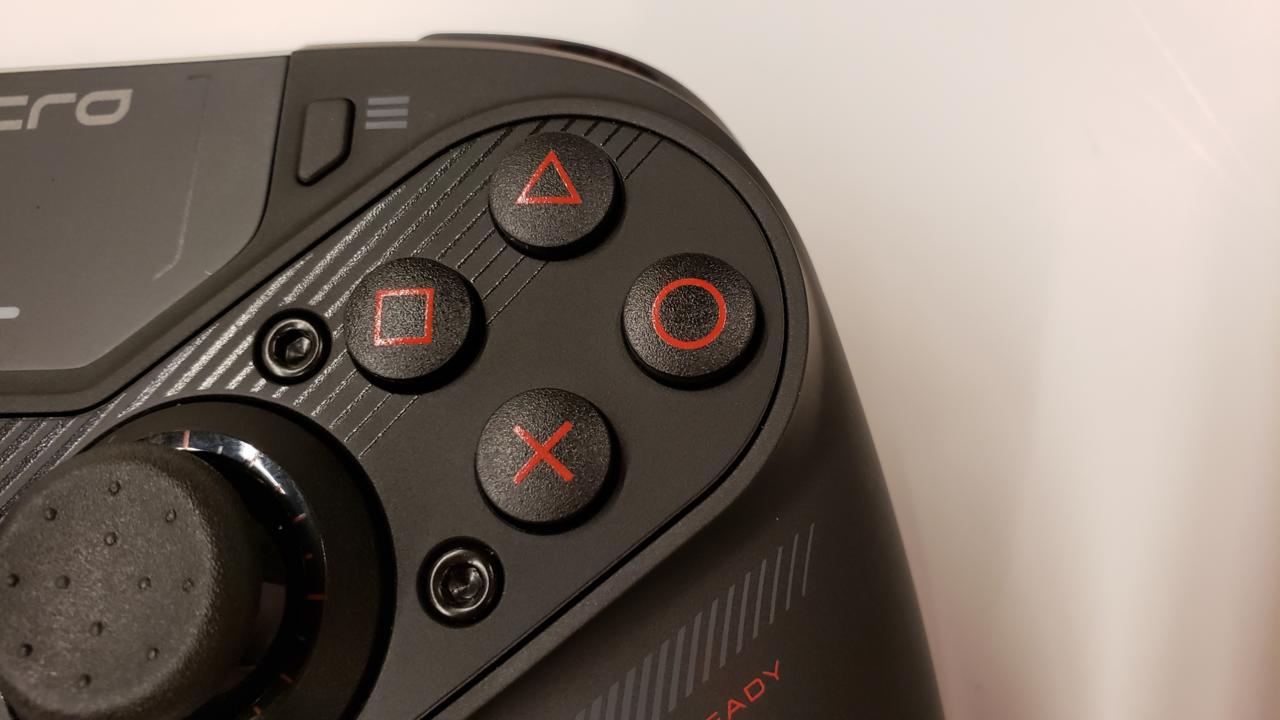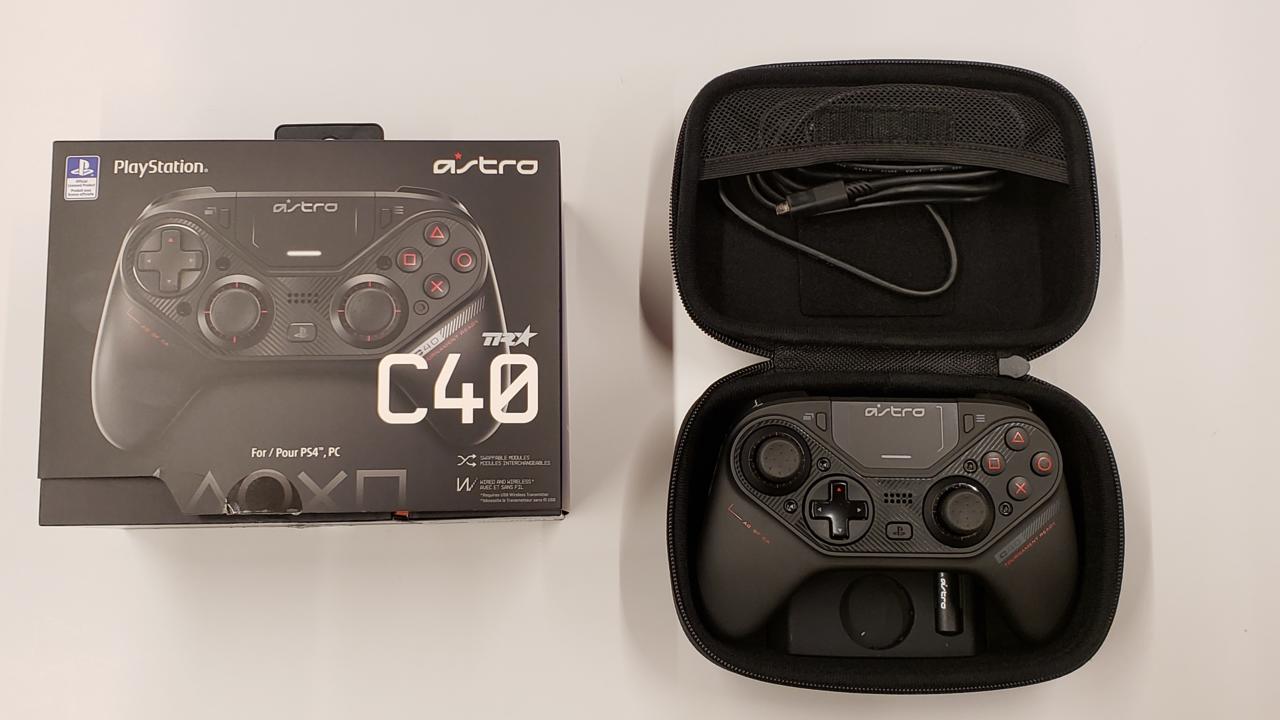Astro's $200 PS4 Controller Is The Best "Elite-Style" For The Console So Far
GameSpot may receive revenue from affiliate and advertising partnerships for sharing this content and from purchases through links.
In Full Control
Astro has made a name for itself as a high-end manufacturer of gaming headsets over the years. You may see esports pros and streamers using the Astro A40 or A50 headsets and MixAmps, but Astro recently delved into pro-grade controllers with its C40 TR ("tournament ready") gamepad. It's a controller officially licensed by Sony that can be used wirelessly through a packaged USB dongle and wired via micro USB for both PlayStation 4 and PC.
The C40 TR is designed similarly to Astro's audio lineup and specifically caters to the enthusiast by virtue of its $200 price tag and roster of features. By and large, the idea of having a high-end controller like this is to have a distinct advantage in competitive games, particularly shooters, thanks to the extra programmable buttons and fine-tuned ergonomics.
To put the C40 TR through its paces, I used it for around 10 hours of total play time bouncing between Warframe and Apex Legends, and a little bit of BlazBlue Cross Tag Battle to see how the d-pad holds up for fighting games. The controller boasts one specific feature that no other gamepad has: the ability to swap between having the DualShock- and Xbox-style analog stick configurations. Testing included using the two different stick positions to get a feel for how well they fared in relation to the rest of the controller's ergonomic design.
There are several third-party "elite-style" PS4 controllers out there right now and I spent time with a few of them. You can check out my Scuf Vantage review, another $200 (wireless) option for PS4 that connects via Bluetooth and has its own host of customizable features. I also have a breakdown of Scuf's previous controllers, the Infinity 4PS and Impact, as well as in-depth looks at the European-exclusive Razer Raiju and Nacon Revolution controllers.
What's In The Box
The C40 TR comes with a semi-hard carrying case that conveniently holds all the parts you get to modify the controller. In it, you have two dome-style analog stick caps, one dome-style extended cap, and one concave extended cap. You get a 6.5-foot micro USB cable and the USB dongle required to use the controller wirelessly. Lastly, you get a 2.5mm Allen key wrench used for removing the faceplate and switching out d-pad/analog stick modules. A disc-shaped d-pad is available, but sold separately.
DualShock 4, Xbox One, And Scuf Comparisons
Next to its Sony and Microsoft counterparts, the C40 TR is quite bulky, though that's not necessarily a bad thing. It's bigger than the DualShock 4, is wider than the Xbox One's controller, and weighs about one ounce more than both. The C40 has a similar build to the Scuf Vantage though its handles are thicker and have a better surface for sustaining grip.
Controller Body
All the necessary features for a PS4 controller are here: the home button in the middle, options and share bookending the trackpad, a 3.5mm audio jack that works in both wired and wireless modes, and all the standard buttons.
Thanks to a low-profile faceplate that's secured by screws, the modular parts don't feel fragile or delicately held together. It has a dense, sturdy build that's noticeable when holding it. As previously mentioned, the C40 TR has some heft that might make it seem cumbersome, but other than a little extra weight, the controller feels natural to use regardless of analog stick configuration.
Modular Features
The biggest feature that makes the C40 TR standout is a modular directional pad and left analog stick. By unscrewing the front plate, you reveal the innards of the controller; everything here is cleanly affixed to their proper positions magnetically. The analog stick and d-pad modules easily pop in and out so you can swap between the two layout styles. Whether you prefer the PlayStation or Xbox stick configurations, both options are available on the same controller.
As a user of both Sony and Microsoft consoles, the two configurations on the C40 TR felt true to both controller layouts.
Analog Sticks
As for the analog sticks themselves, a low-friction and low-resistance feel makes moving the sticks a breeze. It's a smooth and consistent feel that helps with precision aiming in console shooters since subtle, miniscule movements are easier to perform compared to the DualShock 4.
A minor downside of the C40 TR analog sticks is that the surface of the caps (dome-style and concave) are a little too slick, which can cause your thumbs to slip off easily. This hasn't caused issues during intense in-game moments, but I had to readjust my grip from time to time.
Directional Pad
While you can get a disc-style d-pad separately, the default four-way module works well, especially for fighting games. I found that quarter-circle inputs were easier to pull off thanks to a distinct, clicky feel of pressing a direction, and the low-profile of the d-pad itself that is less abrasive to my thumbs.
Bumpers And Triggers
The L2 and R2 triggers have a smooth, consistent resistance when pulling down on them which feels close to the Xbox One pad than the DualShock 4. There are also trigger stops that slightly shorten their throw distance--this can help speed up rapid trigger pulls.
Paddles
The additional programmable buttons, designated UL and UR, are arguably the best execution of paddles on an aftermarket controller. They're sensibly placed where your middle finger rests for easy activation, and strike a great balance between being sensitive enough to hit effortlessly and resistant enough to avoid accidental presses. These are handy for assigning frequent face button or d-pad actions so you can keep your thumbs on the analog sticks and continue moving or aiming.
If there's a downside, it's that you only get two of them on the C40 TR. The impact of this limitation depends on how much you'd use extra paddles--the Scuf Vantage in particular has six programmable buttons for example. But Astro's ability to get this feature right is preferred to simply having more buttons.
Programming The Paddles
Customizing the UL and UR mappings on the fly is a simple process: hold down the programming button behind the controller, press the paddle you want to map, then press the button you want it to act as. You also get two profiles you can swap between with the toggle on the top-left of the controller.
Face Buttons
The face buttons on the C40 TR have a nice tactile feel when pressed down; it's much more noticeable than the Dualshock 4. However, the buttons do have a slight jiggle that makes them feel a little cheap. At least this doesn't affect their functionality.
Connectivity
The C40 TR can be used in wireless and wired modes by flipping the switch atop the controller. Going wireless requires the packaged USB transmitter, even on PS4. This means using the C40 TR will require an open USB port, but the real bummer is that the PS4 isn't able to read the controller's battery life and you can't boot up the PS4 by pressing the home button. It's a limitation most third-party controllers have, unfortunately.
Software
The C40 TR software is a robust toolset that lets you tinker with the controller's functionality and fine tune its inputs--everything from individual analog and trigger sensitivity, audio equalization for when you use the built-in 3.5mm port, and the LED light behavior. You can even remap every button here, not just UL and UR. It's all presented in a clean, minimal set of menus.
Verdict
It's impossible to overlook that $200 price tag regardless of the quality and features of a controller--it can be a deal-breaker for many, even those looking for something more than the DualShock 4. Of course, it's not aimed towards every PS4 owner out there, Astro itself has said as much. However, out of all the enthusiast pro-level gamepads out there, the Astro C40 TR comes the closest to justifying its cost.
There are some minor flaws and limitations from being a third-party accessory. And you may expect a bit more in terms of features since the competition, namely the Scuf Vantage, has useful things like more programmable buttons and an audio control bar, despite its own shortcomings. However, the C40 TR gets everything else down right: from the proper feel of the paddles and triggers to the quality of the d-pad and analog stick modules. It's doing things differently and doing them right. In a world where Sony doesn't offer its own high-end solution, like how Microsoft has the Xbox One Elite controller, Astro fills that void better than anyone else at the moment.
The Astro C40 TR controller is available for purchase at Amazon, Best Buy, and GameStop.
Some links to supporting retailers are automatically made into affiliate links, and GameSpot may receive a small share of those sales.
